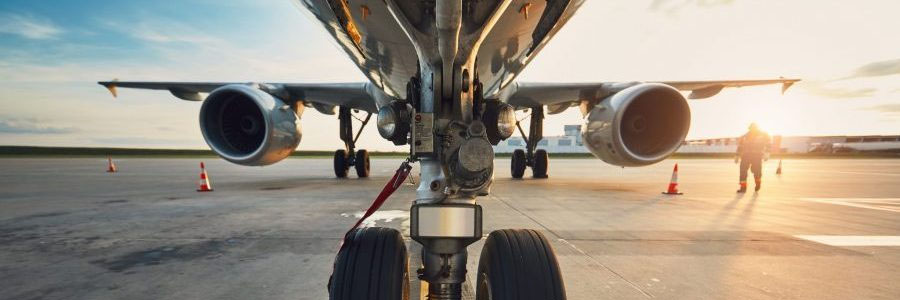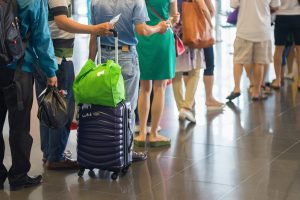
We’ve all heard the horror stories. Long lines, cancelled flights, lost luggage; the list goes on. Air travel is no walk in the park by any means. On top of that, the more people you’re traveling with, the more things there are that can go wrong.
Luckily, we’ve put together this article full of air travel tips that can make flying in a large group, such as a sports team, far less stressful.
Sure, there’s no way to guarantee that a bout of bad weather won’t delay your departure, or that some bleary-eyed businessman won’t mistake your luggage for his own, but at least then you’ll only have to deal with one or two problems instead of many!
Book like a Pro
Ensuring that your group’s air travel experience goes off without a hitch requires proper planning, and lots of it. The first step in this planning process is, of course, booking your group’s flight. You won’t get far off of the ground if you don’t!
Although it might be difficult since you’re probably on a tight schedule and traveling with many other people, try to be as flexible as possible when choosing your flight. This is one air travel tip that can really save you some extra money.

If that’s not an option, Thursday or Saturday are your next best bets. Just make sure to avoid booking a flight for a Monday, Friday, or Sunday, if you can, as these are the most popular days for air travel.
In many cases, the time of your flight matters just as much as the day.
While waking up before the sun rises to catch a flight between 5 and 7 a.m. probably doesn’t sound like the most pleasant way to kick off your trip, it can end up making a big difference in terms of the crowds you’ll come across at the airport. Any time after 8 p.m. is considered off-peak also.
In addition to avoiding crowds, flying during off-peak days and times can save you money. That’s because when the demand for flights is low, the cost of airfare typically is too. Talk about a win-win!
If you and your group will be embarking on a long flight, the taller travelers among you will appreciate having a seat with some extra legroom. Fortunately, this luxury is not exclusive to first-class passengers.
That’s right; you can score some extra space in coach by booking an exit row seat. These seats are situated next to the emergency exit of a plane and provide passengers with a few more inches of legroom than non-exit row seats.
However, since passengers in exit row seats need to be able to assist the plane’s crew in the event of an emergency evacuation, they must meet certain criteria. These criteria vary by airline, but typically entail that passengers meet a minimum age requirement and are in good physical condition.
Cut the Lines
Once you’ve booked your group’s flight, check in online and print out a couple copies of everyone’s boarding pass. Doing so will let you skip having to check in when you arrive at the airport. That’s one less line you’ll have to wait in. This step isn’t as imperative if you plan to check bags, however, since doing so will require you to stop by the check-in counter regardless.
If you’re looking to spend even less time waiting in lines at the airport, consider applying for TSA PreCheck.
Being approved for TSA PreCheck means that you won’t have to remove certain articles of clothing or take items like liquids and laptops out of your bag during the security screening process.
To apply for TSA PreCheck, you’ll have to submit an online application, go through an in-person background check and fingerprinting session, and pay an $85 membership fee.
Although $85 might sound a little steep, a TSA PreCheck membership lasts for five years. So, if you fly often, you might find that the convenience of the membership outweighs the cost.
Even if you don’t end up opting for TSA PreCheck, there are still some other ways you can expedite the screening process. Before getting into line, double-check to make sure that everyone in your group has both their ID and boarding pass out and ready to present to a TSA agent.
Once everyone’s ready, choose your line carefully. Try to avoid lines with children as best you can. Instead, look for the line that looks like it has the most suits; businessmen and women are typically the savviest travelers and are therefore no strangers to the security screening process.
Pack with Purpose
Another factor that’s integral to making sure your group’s air travel experience is as hassle-free as possible is how you pack your bags.
Before trying to haphazardly cram everything into one giant suitcase, it’s important to know the do’s and don’ts of how to pack bags you plan to bring with you on a flight.
First and foremost, pack as light as possible. Most airlines allow passengers to bring one piece of carry-on luggage on board, as well as a smaller bag like a purse or backpack that can be stowed under the seat in front of you.
If you’re able to fit everything into these two bags, you can skirt around having to pay baggage fees entirely. However, it’s not unheard of for budget airlines, such as Spirit and Allegiant, to charge passengers for carry-on luggage, so be sure to inquire about this ahead of time.

One simple fix is to tightly roll up all of the clothes you’re bringing. This method of packing clothes conserves more space than if you were to fold them.
You can also try to wear as many articles of clothing as you can instead of packing them. For instance, don’t stuff a bulky coat into your bag. Instead, wear the coat while you’re at the airport. You can always take it off once you’re on the plane anyway.
Packing practically is just as important as packing lightly. When choosing which bag to put which items in, keep in mind that your carry-on luggage will not be as readily accessible as the bag stowed under the seat in front of you. This is because carry-on luggage must be placed into overhead bins that you can only get up to open once the captain has turned off the “fasten seat belt” sign when the plane has reached cruising altitude.
As you pack your bags, you should make sure that items you’ll need to take out during the security screening process are placed atop everything else or in a separate pocket entirely. Trying to fish out your laptop or a Ziploc bag full of liquids while in line at the security checkpoint can make the whole ordeal even more nerve-wracking, especially for first-time fliers.
Be Smart; Use Your Smartphone
It should come as no surprise that one of the most useful air travel tips is using your smartphone. These nifty, little devices always seem to be right nearby anyway, so why not put them to good use?

An additional benefit of these apps is that you can download a digital copy of your boarding pass onto your phone. Having this digital boarding pass will provide you with some peace of mind in case you happen to misplace the printed copy.
Another smartphone trick that could end up coming in handy when you’re traveling with a group is putting the airline’s customer service number in your contacts so you can quickly reach them in the event that your flight is delayed or canceled.
An airline’s customer service department can almost always be reached via social media as well, so consider making an account on popular outlets like Twitter and Facebook, if you haven’t already.
Also, if you’re planning to drive to and park your car at the airport or an off-site lot, use your smartphone’s camera to document where you parked. Although it may seem trivial, taking a moment to do this could end up saving you the trouble of having to scour row after row of vehicles to find your car when you return.
Prepare for Takeoff

However, there are a still few things you’ll want to keep in mind to make the flight as pleasant as possible for you and your group.
Staying hydrated is critical when traveling by plane. The pressurized cabin air on the plane typically has between a 10 to 20% humidity level, which is significantly lower than a comfortable indoor humidity level of 30 to 65%.
This lack of humidity can lead to dehydration, which is the last thing you’ll want to be dealing with when you land.
To fend off the effects of dehydration, make sure that you and everyone else in your group drinks plenty of water. Also, avoid the temptation of caffeinated or sugary drinks like coffee and soda, no matter how tired you might be. Drinking beverages like these will only leave you feeling worse.
If that’s not enough to convince you to pass on a cup of joe when the flight attendant makes their rounds, it’s worth mentioning that the coffee served on airplanes is made with water that’s not particularly sanitary.
A plane’s on-board water tanks are typically only cleaned in the event that harmful bacteria are detected during periodic tests. This is because the cleaning process is both costly and time-consuming.
Another part of a plane that’s not as clean as one would hope is the tray tables. Yes, they are wiped down after each flight, but usually not thoroughly enough to make sure they are as germ-free as they should be. So take matters into your own hands, and have everyone in your group clean off their tray table with a disinfecting wipe before use.
Depending on the distance and direction of your flight, you might also be at risk of experiencing jet lag once you arrive at your destination. If you think this might be the case, consider skipping the in-flight meal in exchange for restful, uninterrupted sleep. Simply inform the flight attendant or the person in the seat next to you if you want to opt for sleep over eats.
10 More Tips
- Know what you can and can’t bring.
- Transfer toiletries in large containers into smaller ones.
- Charge all of your electronics, and bring a portable charger just in case.
- Download shows, movies, podcasts, and e-books.
- Use apps like MiFlight, LoungeBuddy, and SpotHero.
- If you plan on sleeping, pack a travel pillow, earplugs, and a sleep mask.
- Bring an empty water bottle, and fill it up once you get through security.
- Opt for an aisle seat if you’re tall and couldn’t score one in the exit row.
- If your flight gets cancelled, call customer service while waiting in line at the gate.
- Get up every couple of hours to keep the blood flowing.
Now, all of this might sound a bit overwhelming, especially if this is your first time flying. But there’s no need to panic! While air travel can be unpredictable and, at times, chaotic, you’ll be flying like a pro as long as you keep all of these helpful air travel tips in mind.


